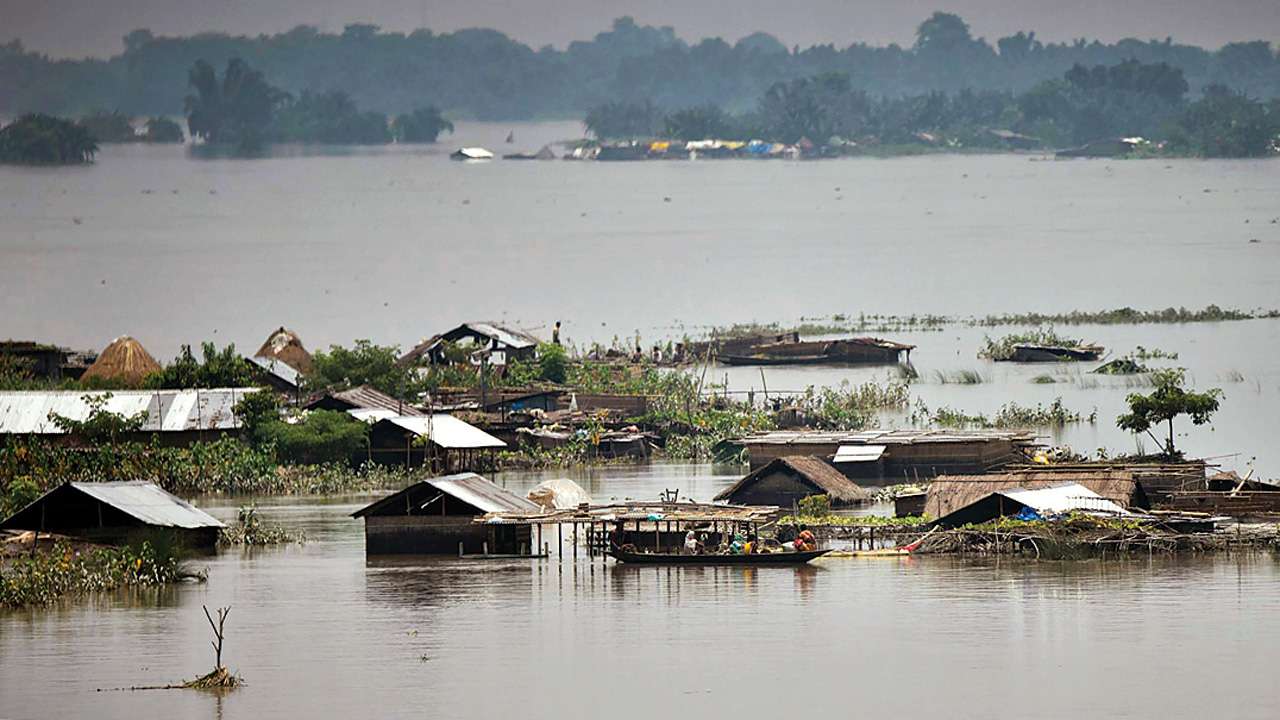
Brahmaputra erosion forces Assam villagers to take shelter on embankments

As the annual floods and erosion of the Brahmaputra River had eaten away their landed properties over the years, the people of Bhogerpar village in Assam’s Barpeta district have been forced to take shelter on embankments, relief camps and nearby villages.
The small village, situated 15 km from Barpeta district headquarter town and measures just about one sq km, has been facing the ruthless assault of the river every monsoon so much so that every immovable property standing on it — homes, schools, places of worship for its 150 Hindu and Muslim families have been destroyed.
As a result of the annual flooding, the number of families living in Bhogerpar has decreased to 95. “In 2007-08, the Brahmaputra eroded a massive portion of the village. Since then, we are losing our lands every year to the mighty river and our sufferings are growing,” said Ratul Pathak, a 46-year old teacher at a private school.
Like many others in the village, he has with him bare minimum necessities from his home at Bhogerpar. “Today there is no cropland in our village,” said Pathak, who has now taken shelter at Baradi. Most of those who live at Bhogerpar village have become cattle farmers, and some have even turned daily wage labourers, while many left for nearby villages and towns to eke out their living, he said.
According to the Assam water resources department, flood and erosion is a serious issue in the state as more than 4.27 lakh hectares of the Brahmaputra and its tributaries have already eroded 7.4 per cent of the state’s total area since 1950. The annual average loss of land is nearly 8,000 hectares, and the width of Brahmaputra has increased up to 15 km at some places due to erosion, it said.
The surveys carried out during different periods reflect an alarming picture regarding the widening of the Brahmaputra, whose total area in the state has gone up to 6,080 sq km in 2006 from 4,850 sq km between 1963-1975. In the first survey conducted during 1912-28, the river had 3,870 sq km of area.
“It is known to all that none can prevent the mighty Brahmaputra, but at least some measures should have been taken. We have no one but the Almighty. Our only Namgar (place of worship for Vaishnavites in Assam) was also taken away by the river,” said 67-year-old villager Ramani Pathak, with tears in her eyes.
Related Video: COVID, Japanese Encephalitis and now floods: What Assam battles
“My forefathers had lost their farmland due to the erosion. We were making a living by cattle farming. I used to get 15-20 litres of milk per day which I sold in the market at Barpeta to meet my daily needs. But this time, the flood has taken everything. My livestock is gone. I don’t know how I am going to survive,” said Dhananjoy Bayan, another villager.
His brother Kulen has taken shelter on an embankment with his cattle. He said the herd has not got proper feed for days even though the district administration officials have claimed that enough foodgrain has been distributed for both men and animals.
Sabur Khan, a daily wager and a seasonal fisherman, said he was clueless how to earn his living once the flood water recedes as this year’s deluge has been very severe and has destroyed everything in the village. “I do not have any cattle nor any cropland. After this flood, my family has to starve. This Brahmaputra has finished our life… It is inexplicable pain to leave one’s birthplace and live in a tent on an embankment,” he said.


